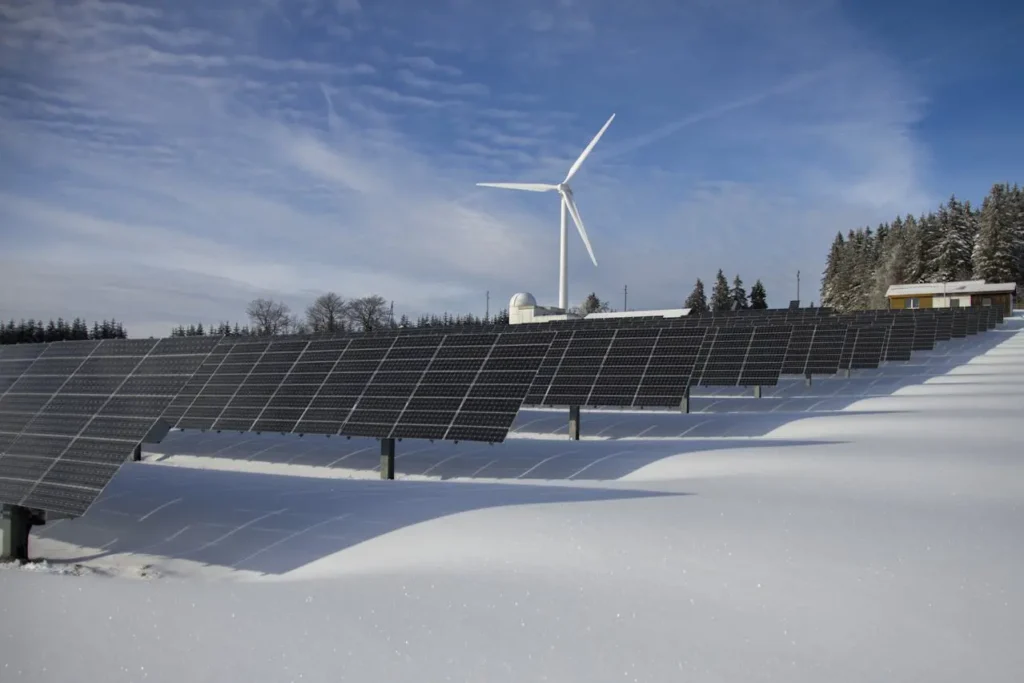As the world’s attention swings to the future of humanity, businesses are looking for smarter ways to protect our planet while still meeting their customer’s needs. AI and sustainability are not mutually exclusive terms. In fact, AI in sustainability offers a powerful new tool that can help companies shift to a future that’s environmentally friendly and sustainable. Today, the team will explore sustainability with AI, including practical solutions businesses can focus on to improve their green innovation and help shape a better future.
Understanding AI and Sustainability
AI is often compared to a super-smart computer “brain”. One that can sift through and analyze massive amounts of information and data quickly. In doing so, it finds trends, patterns, and other markers which human eyes may miss.
This is fantastic for business analysis, understanding shifting markets, and even financial planning that’s personalized for each user. However, it also has immense potential to shift how we think about sustainability with AI.
Imagine an AI-powered process that can optimize resource usage throughout your company. Great for your bottom line, yes. But also a gamechanger for the planet, with less waste and excessive surplus being manufactured, moved, and shipped for no reason.
Additionally, AI in sustainability can use that trend-finding power to help predict environmental challenges and make more eco-friendly decisions. It may not be what you think of first when you hear “smart business analysis,” but as consumers themselves demand more green solutions from companies, it will become more and more important. Both for the planet, and for keeping your customers happy and growing their trust in what you do.
AI and Sustainability: Environmental Monitoring
Let’s expand that idea even further. Imagine having a technology that can track environmental data, spotting changes in real-time. This use of AI for sustainability provides both immediate and long-term positives.
With advanced data crunching, pattern recognition, and smart use of trends, these AI environmental monitoring systems can respond in near real-time when crisis patterns are detected. This helps improve disaster response and supports first responders on the ground. While we may not always be able to avoid dramatic weather events, a faster, facts-based response can help mitigate loss of life and property significantly.
However, AI in sustainability can do more than just alert us to these large-scale events. They can help us monitor worrying trends and shifts. For example:
- Satellite images analyzed by AI can track deforestation
- AI-powered sensors can detect pollution levels
- Machine learning algorithms can predict climate change impacts
Armed with this clear information, we can take steps to mitigate and even reverse key environmental damage and work to a greener future.
The Green Energy Revolution

AI and sustainability initiatives are also changing how we produce and use energy. Here are just some of the exciting ways AI supports green energy:
- Renewable Energy Optimization
- AI predicts the best times for solar and wind power generation
- It helps balance energy supply and demand
- Technology helps reduce our reliance on fossil fuels
- Energy Efficiency
- AI systems can control building temperatures automatically
- They can also identify energy waste in industrial processes
- Lastly, AI can suggests ways to reduce power consumption
But that’s enough of the theory. Are we seeing this potential used in real-world situations? Yes, we are. Google’s DeepMind AI has already helped reduce energy used for cooling by 40% in its data centers. This shows how AI and sustainability can work hand in hand.
Additionally, as we work towards smart grid management for cities, we’re already seeing utility companies deploying AI to:
- Better balance electricity supply
- Integrate renewable energy sources
- Predict and prevent power outages
AI for Sustainability in Business Practices
If that’s the bigger picture of AI for sustainability, what does it mean for individual companies and businesses? Using AI in sustainability practices for individual companies not only helps them green their practices and cater to client’s evolving demands, but also keeps them cost-effective and competitive.
Waste Reduction
Waste is a big issue for our planet. However, it’s also a budget-eating drain on your business bank account. Every overstock, every misorder, and every inefficiently used product or supply takes a slice from your bottom line. Better sustainability with AI is possible through:
- Precise inventory management
- Predicting product demand
- Designing more efficient packaging
- Tracking and analyzing waste streams
With AI to help you discover budgetary sinkholes and optimize your production cycle, a greener future and a balance sheet in the black are both possible.
Supply Chain Sustainability
That’s not all AI and sustainability can do together, however. AI can make supply chains more environmentally friendly by:
- Optimizing transportation routes
- Reducing carbon emissions
- Identifying more sustainable suppliers
- Predicting potential disruptions timeously
As with the more direct forms of waste we looked at earlier, inefficient supply chains both eat budget and harm the planet. Luckily, using AI for sustainability offers a viable way to address these wasteful practices.
AI for Sustainability in Agriculture and Conservation
While the scenarios we’ve looked at above impact every business, no matter its industry, sustainability with AI offers an immense amount of new power to both agriculture and conservation.
AI is revolutionizing agriculture by helping farmers:
- Use water more efficiently
- Reduce chemical pesticide use
- Predict crop yields
- Monitor plant health using drone imagery
We’re only just beginning to explore how AI can help us conserve our wildlife. However, conservation experts are already excited about AI’s use to:
- Track endangered species
- Monitor animal populations
- Detect illegal logging and poaching
- Understand ecosystem changes
Preserving Earth’s remarkable biodiversity is, itself, a lofty and worthwhile goal. However, it’s worth noting that wildlife and conservation-focused tourism is a massive funds generator for many countries, especially developing nations. Smart AI use could potentially help shape a healthier tourism ecosystem and ensure funding is correctly channeled to those working on the ground to help preserve wildlife and the people who rely on tourism for their economies.

AI in Sustainability: Not Without Challenges
Improving sustainability with AI has massive potential. But, as with anything in life, it isn’t without challenges of its own. AI data centres themselves currently need massive amounts of energy to run. While it’s still a net good, there needs to be a sharpening focus on reducing that footprint to truly meet the goals of using AI for sustainability. As the technology evolves, energy-efficiency and smart solutions must be a focus.
Likewise, individual smaller businesses may be concerned about:
- High initial technology costs
- The need for specialized technical skills
- Potential data privacy concerns
- The demands of continuous technology updates
AI is still in its infancy. As the technology matures, many of these concerns will be offset by new developments. However, it’s important not to lose sight of them, and for communities, businesses, and governments to take smart steps to offset these concerns.
Getting Started with AI for Sustainability
For business owners interested in AI-driven sustainability, getting started may be easier than you think.
- Assess your current environmental impact
- Research AI technologies relevant to your industry
- Start with small, manageable AI projects
- Invest in employee training
- Continuously monitor and adapt your approach
Over time, you can grow your investment in AI for sustainability, and refine business processes to meet those goals.
Embrace the Future of Sustainability With AI
AI is a cutting-edge technology that does a lot of cool, profit-driving things. However, its potential reaches far beyond just daily business practices. It could be our most powerful partner in shaping a greener world. As AI continues to evolve, we can expect even more innovative solutions that help businesses reduce their environmental footprint.
The very thing that makes AI so appealing as a business technology can help further our environmental goals, too. AI provides smart, data-driven sustainability solutions and technologies that can be applied across diverse industries.
If we make the right initial investments, making use of AI for sustainability will lead to long-term environmental and economic benefits. However, continual learning and adaptation are crucial. As is ensuring we don’t embrace technology for technology’s sake alone. Instead, we need to ensure sustainability and green solutions remain high on the priority list as we move forward into a fully digital era.
By embracing AI, businesses can play a crucial role in protecting our planet while also improving their operational efficiency and brand reputation.
Explore AI for Sustainability with Raj Goodman
If you’re ready to embrace this exciting new frontier for business innovation, feel free to reach out to Raj Goodman and the team to explore your options. As AI technology leaves its infancy, it’s the companies that adopt these intelligent solutions that will be better positioned to meet our rising environmental challenges and create a greener future. All while improving their business practices and keeping customer satisfaction high. Don’t you think it’s time you got started?
Recent Posts
-
November 28, 2025
-
October 15, 2025
-
September 17, 2025






